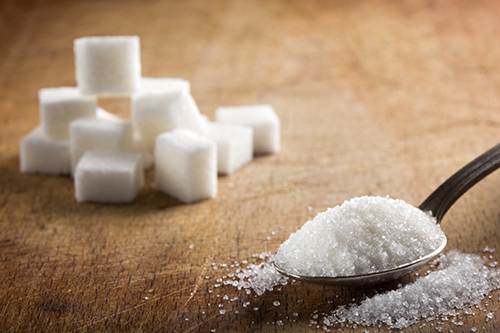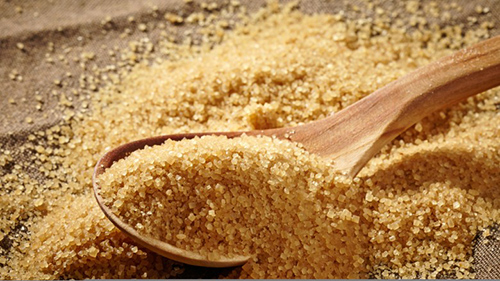Contents
There are many different types of sugar. However, few good products have been the objects of as much lively controversy as this substance. Some see the growing consumption of sugar as responsible for most of modern society’s evils, from dental cavities to cardiac disease and type II diabetes. Others see sugar only as a chemical compound that can sweeten our lives and provide energy to our cells.

Sugar is a natural substance that makes up part of many healthful foods, such as fruits and vegetables from which it is derived. It provides the energy that allows the body’s cells to function. It should not be said that sugar itself is harmful to health. Sugar’s composition does not cause the health problems associated with it, but rather:
- What it does not provide: the problem with sugar is not what it contains but what it does not have. It has no vitamins, minerals, fiber, antioxidants, or other nutritious substances in plant foods that provide protective effects. This is why it is said that sugar’s calories are “empty.”
- The amount consumed: The average consumption of different types of sugars in developed countries is between 80 and 100 grams a day per person. This amount is much higher than the 50 grams accepted as the maximum intake for a healthy 2000-calorie diet.
- The products with which it is associated: Sugar is usually added to instead unhealthful products, such as pastries, ice cream, refined and processed foods, and artificial beverages. For this reason, eating a great deal of sugar possibly entails consuming many products that are also undesirable from a health standpoint.
Is Sugar Fattening?
Each gram of one of the nine different types of sugar provides four calories when metabolized or burned in the body’s cells. When one eats excessive amounts of sugar above the body’s energy requirements, part of that sugar is transformed into fat in the liver. Each gram of excess sugar accumulates throughout the body, leading to weight gain.
An even more significant fat increase occurs when sugar is eaten with fats, as with pastries or chocolate, and the excess calories are not metabolized. All different sugar types, remarkably ordinary table sugar or any refined sugars, are fattening if the energy they provide is not utilized.
Different Types of Sugar
Common Sugar
Often referred to as white sugar, refined sugar, granulated sugar, or only sugar.

- Origin: Sugarcane or sugar beets.
- Composition: 99.8% saccharose, a disaccharide formed by the union of two monosaccharides: glucose and fructose.
- Digestion and absorption: Saccharose cannot pass directly to the bloodstream without first being digested by intestinal disaccharidase, which breaks it into its two components, glucose, and fructose, which are rapidly absorbed.
- Use: Of all the different types of sugar, this is the most widely and commonly used additive found in human foods.
Powdered Sugar
This form is manufactured by grinding common sugar crystals and mixing the resulting powder with starch to prevent it from clumping.
Invert Sugar
- Production: when ordinary sugar (saccharose) is heated in the presence of enzymes or a weak acid, it decomposes into its two monosaccharides, glucose, and fructose.
- Composition: Invert sugar is used as syrup. It is formed of equal parts of glucose and fructose.
- Use: It is sweeter than common sugar. It is used as an additive in baking and desserts due to its ability to keep buns and cookies fresh.
Maple Sugar

- Production: Maple syrup is the first product when maple sap is boiled down. As the boiling process continues, followed later by condensation and crystallization, the result is maple sugar.
- Composition: Saccharose, fructose, glucose, and a small proportion of minerals and vitamins. It is extremely rich in zinc and other trace elements, as maple syrup.
- Use: It can be used much as common sugar. It has a unique flavor, somewhat reminiscent of honey.
Brown Sugar

- Production: Most of what is sold today as brown sugar is simply white sugar mixed with a molasses extract. This gives it its color and particular flavor in addition to a tiny proportion of vitamins and minerals, primarily iron and calcium.
- Nutritional value: Commercial brown sugar is much inferior to molasses in terms of mineral content, and its nutritional value is only slightly greater than common sugar. Authentic brown sugar, also known as raw sugar, is obtained by crystallizing sugarcane juice without further processing or refining. Only it can be appropriately called whole sugar. It is then referred to as turbinado sugar when it is minimally processed to remove impurities and dirt. Both are rich in calcium and iron but less than molasses.
Glucose (dextrose)

- Origin: This sugar is found in many fruits, particularly grapes. It is prepared industrially by fermenting starch.
- Digestion and absorption: Glucose does not require digestion to be absorbed; in other words, it passes directly into the bloodstream without requiring any transformation. Nevertheless, it does require the hormone insulin to be metabolized by cells of the body to produce energy. Excess glucose is transformed into glucogen and fats in the liver.
- Use: Even though it is less sweet than common sugar or saccharose, it is used as an additive in the food industry.
Fructose
This sugar is also called levulose. Its molecule is formed by the same atoms as glucose but in different spatial positions. Because of this, glucose (dextrose) and fructose (levulose) are called isomers.

- Origin: This is one of the many different types of sugar found naturally in fruits, but not the only one.
- Composition: Some might think erroneously that fructose contains part of the standard components of fruit since that is its source. However, fructose is a refined and purified product formed only by the monosaccharide fructose.
- Benefits:
- Fructose is sweeter than common sugar.
- It dissolves better in water.
- People with diabetes better tolerate it since it does not raise blood glucose levels and requires less insulin to be metabolized. However, this does not mean that people with diabetes can use fructose in large amounts: a portion of the fructose is transformed into glucose in the liver, requiring insulin; besides, excess use presents serious drawbacks.
- Drawbacks: When fructose and glucose are eaten in similar quantities, as with ordinary sugar, honey, or fruit, it is absorbed well and causes no disorder. However, the following conditions occur when fructose is eaten in a much more significant proportion than other sugars.
- Diarrhea and intestinal fermentation, since it is not absorbed well and remains as part of the feces.
- Metabolic disorders: Excess fructose in proportion to glucose provokes:
- Elevated triglycerides and, in some cases, high cholesterol. All of this leads to a predisposition to arteriosclerosis.
- Acidification of the blood and an increase of uric and lactic acids.
- Arterial hypertension.
Even though fructose is a natural sugar that may form part of a healthful diet when adequately balanced with glucose, it produces undesirable effects if disproportionately consumed.
Lactose

- Origin: This is the sugar that is found naturally in milk.
- Composition: Lactose is a disaccharide formed from two monosaccharides: glucose and galactose.
- Digestion and absorption: Digestion of lactose requires the enzyme lactase typically produced in the intestine’s mucous lining. Lactose is thus transformed into glucose and galactose. Adults of races other than white Caucasians tend to produce little lactase. Therefore, they do not tolerate lactose well and suffer digestive disorders when they consume it.
- Use: Lactose is less sweet than typical sugar. It is used in various pharmaceutical measures and some food products in amounts too small to produce disorders.

Maltose
- Production: The decomposition of starch produces maltose by yeast enzymes.
- Composition: This is a disaccharide whose molecules are formed by the union of two glucose molecules.
- Use: Maltose is much less sweet than typical sugar. It is used in the baking industry.
How Much Sugar?
Minimum: No healthy person needs to eat sugar to maintain good health. The less sugar we eat, the better. In a balanced diet, the sugar provided by fruits and vegetables is more than sufficient to meet the possible demands of intense physical activity.
Maximum: According to the World Health Organization, total sugar in the diet (from fruits, vegetables, and added sugar) should not exceed 10% of total caloric intake. For a 2000-calorie diet, this represents 200 calories from sugar, or 50 grams of sugar (each gram of sugar provides some four calories).
DISCLAIMER: All content on this website is presented solely for educational and informational objectives. You should not rely on the information provided as a replacement for advice, diagnosis, or treatment from a qualified medical expert. If you are pregnant, nursing, or have any preexisting medical concerns, you should talk to your doctor before using any herbal or natural medicines.
REFERENCES
- George D. Pamplona-Roger, M.D. “Encyclopedia of Foods and Their Healing Power.” George D. Pamplona-Roger, M.D. Encyclopedia of Foods and Their Healing Power. Trans. Annette Melgosa. Vol. 1. Chai Wan: Editorial Safeliz, 2005. 168, 169, 170, 171. Print. [different types of sugar]
- The Sugar Association: https://www.sugar.org/faqs/
- Making Sense of Sugar: https://www.sugar.org/faqs/
